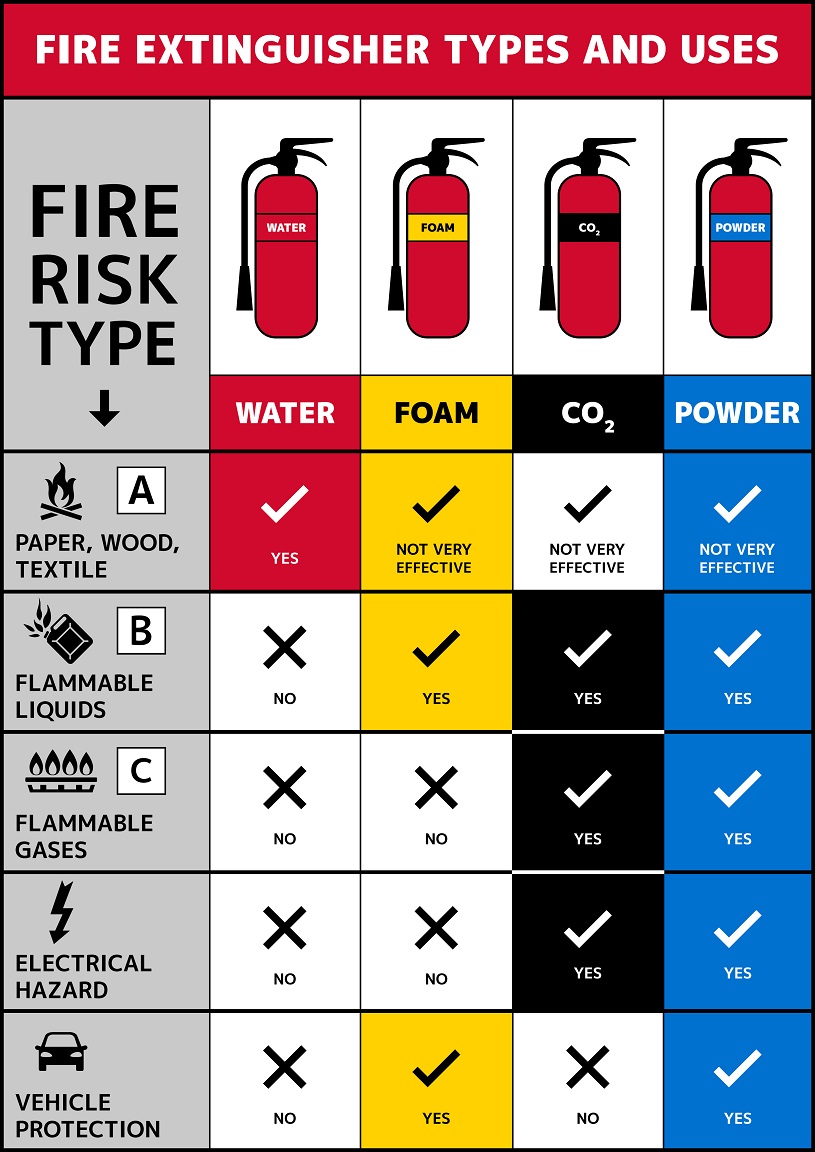
Selecting the Correct Fire Extinguisher Type could be the difference between life and death
How to read the classification label: The number before the "A" represents a multiple of 1.25 gallons of water whereas the number before the "B" represents a multiple of the area or size in square feet of fire to be extinguished.

How Many Types Of Fire Extinguishers Are There And How To Use Them
Once you have selected the appropriate fire extinguisher, approach the fire from uphill and upwind, as applicable. As you approach the fire, utilize the P.A.S.S. method of operation, beginning about 10 feet away. P= PULL THE PIN A= AIM THE NOZZLE AT THE BASE OF THE FIRE S= SQUEEZE THE DISCHARGE LEVER S= SWEEP SIDE TO SIDE.

What is Fire Extinguisher ? Classification of Fire Enxtinguisher Types and uses
IFSEC Insider Choosing fire extinguisher types for the relevant class of fire could literally be the difference between life and death. So here's a useful guide on how to choose the right type and class of fire extinguisher for the appropriate scenario, including colour codes, fire classes and uses.
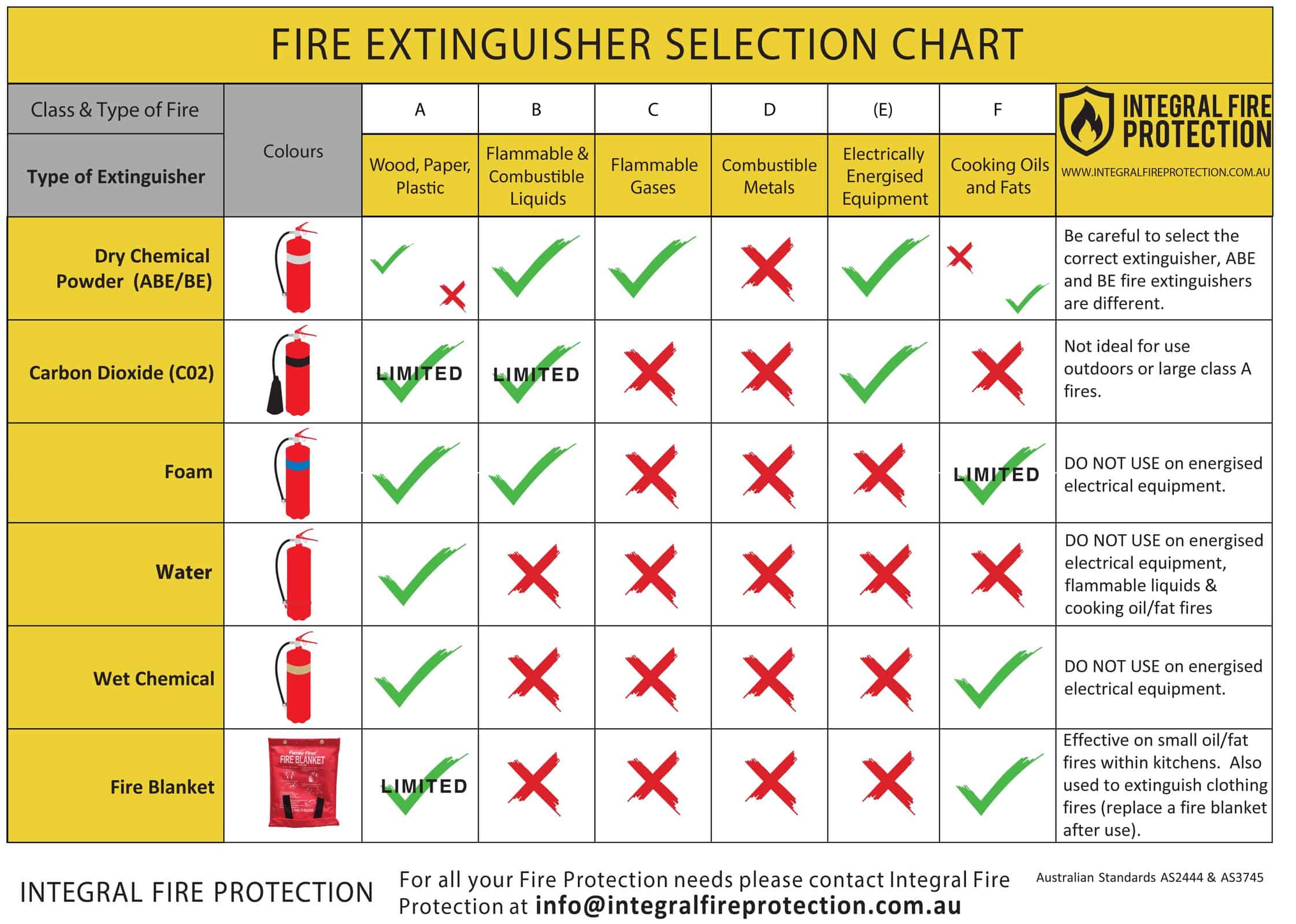
Fire Extinguisher Chart Fire and Safety Education
01. Class A Fire Extinguishers Class A fire extinguishers are safe for use on ordinary combustible fires, like those fueled by paper or wood. There are a number of safe ways to extinguish a Class A fire, so you'll find a variety of Class A fire extinguisher options available.
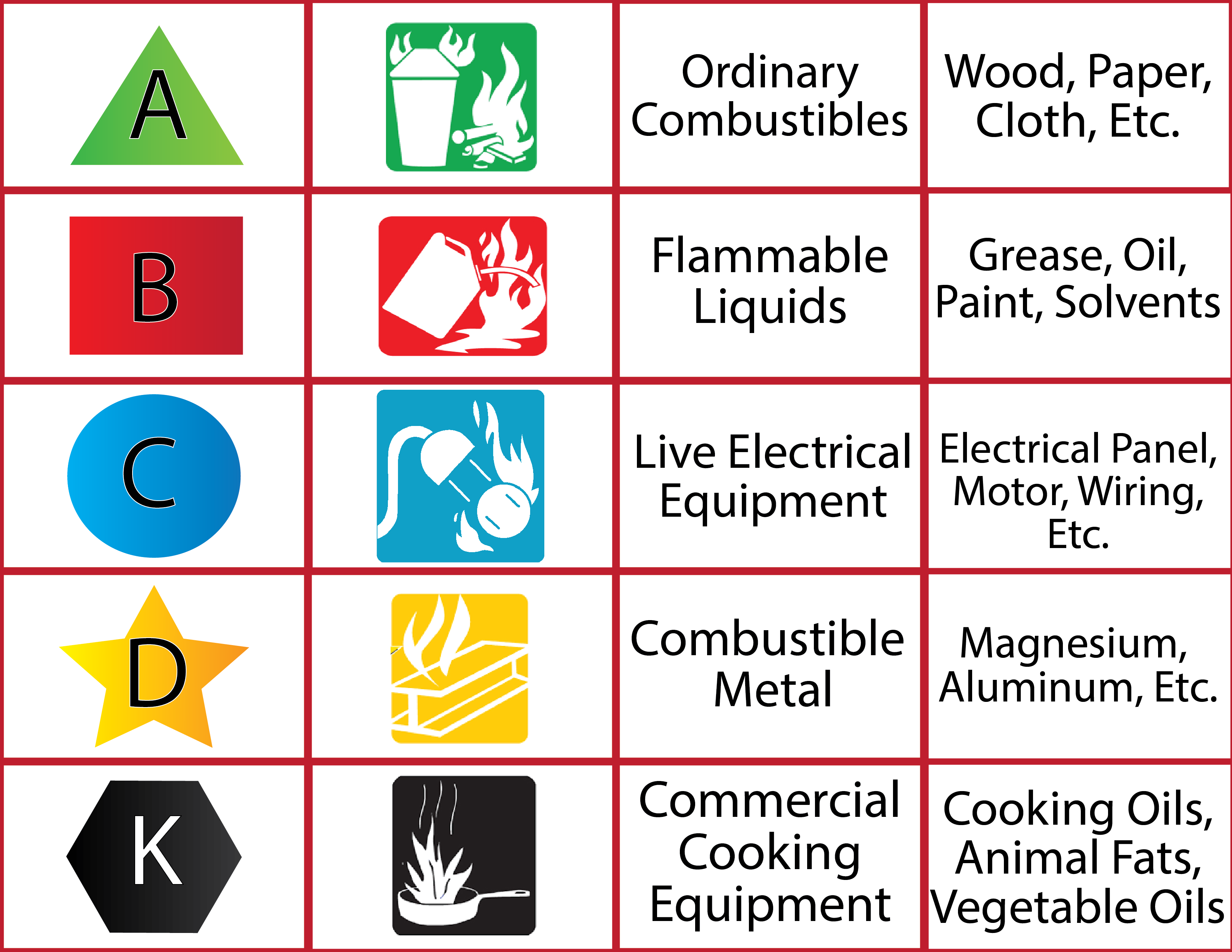
How to Choose the Right Fire Extinguisher
The eight different types of fire extinguishers include specialist dry powder, standard dry powder, foam, water spray, water mist, water spray, wet chemical and carbon dioxide. There is no single fire extinguisher that can be used on all classes of fire. Here is a brief summary of different fire classes along with a reference chart displaying.
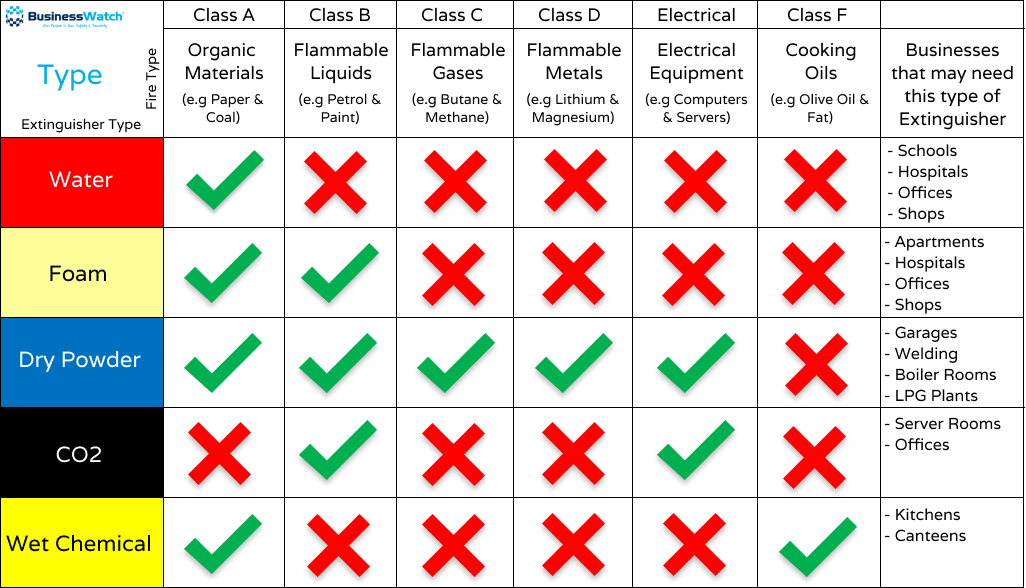
Fire Extinguisher Meaning, Classes, Types, Selection, Use, Inspection (With PDF) What is Piping
A. Water and Foam. Water and Foam fire extinguishers are suitable for: Class A Fires. These extinguishers operate by removing the heat of a fire, while the foam creates a barrier between the flames and the fuel source to prevent re-ignition. Caution: Do not use on Class B, C, or K fires, as it can spread the flames or cause an electric shock.
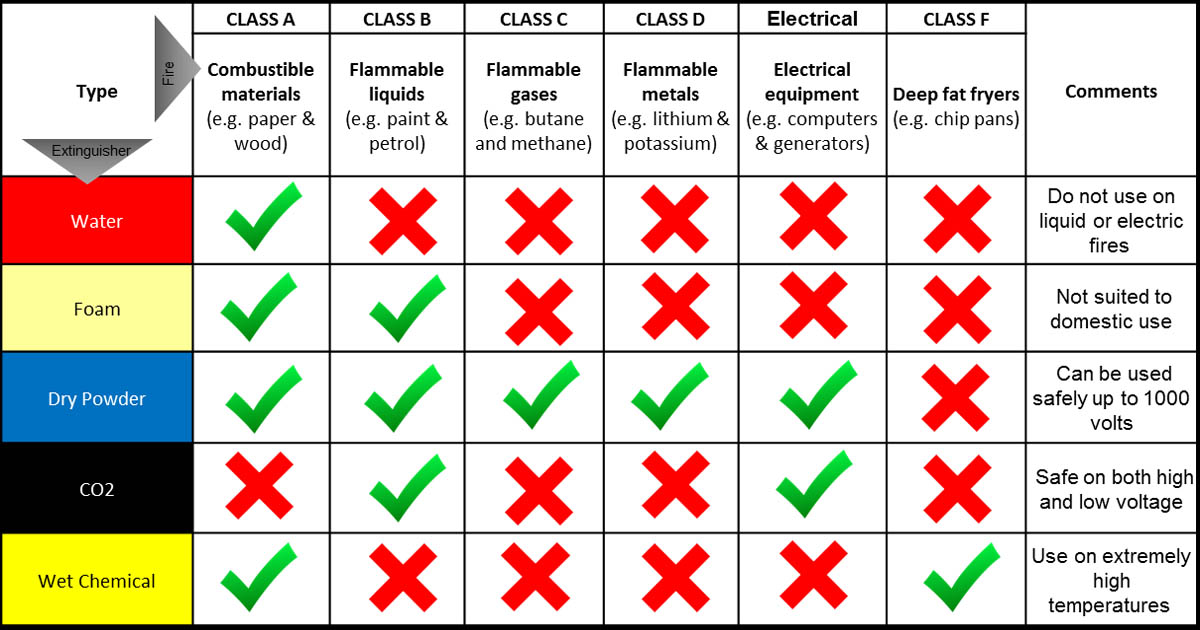
Fire Extinguisher Guide How They Work Northland Fire
The fire extinguisher for a Class C fire should be based on the amount of Class A or Class B component. For Class D extinguisher use, the relative effectiveness is detailed on the extinguisher nameplate for the specific combustible metal fire for which it is recommended. Types of Fire Extinguishers and Their Uses.
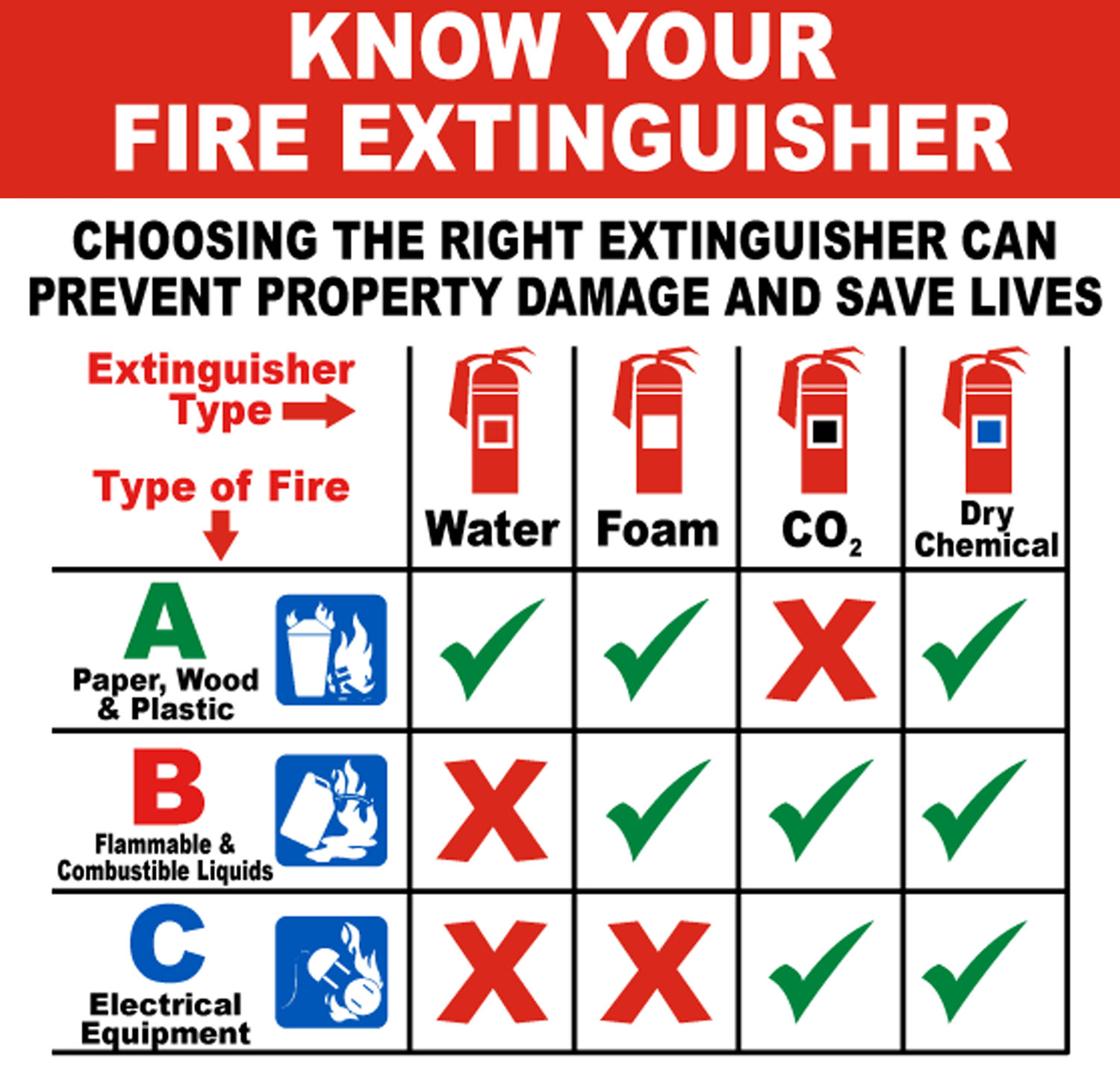
Fire Extinguisher Types of Extinguishers — Double D Fire
Most common type of fire Class B Fires Fueled by flammable liquids and gases Can be prominent in gas stations, bars, and chemistry labs Class C Fires Electrical fires involving faulty wiring, electrical equipment, and appliances A danger in breaker rooms, server rooms, and construction sites Class K Fires Fueled by grease, cooking oils, and fats

Types of Fires and Fire Extinguishers Hillsborough Fire Equipment
Class A Class A fires involve ordinary combustible materials, such as cloth, wood, paper, rubber, and many plastics. Extinguishers with an A rating are designed to extinguish fires involving these ordinary combustible materials. Class B Class B fires involve flammable and combustible liquids such as gasoline, alcohol, oil-based paints, lacquers.
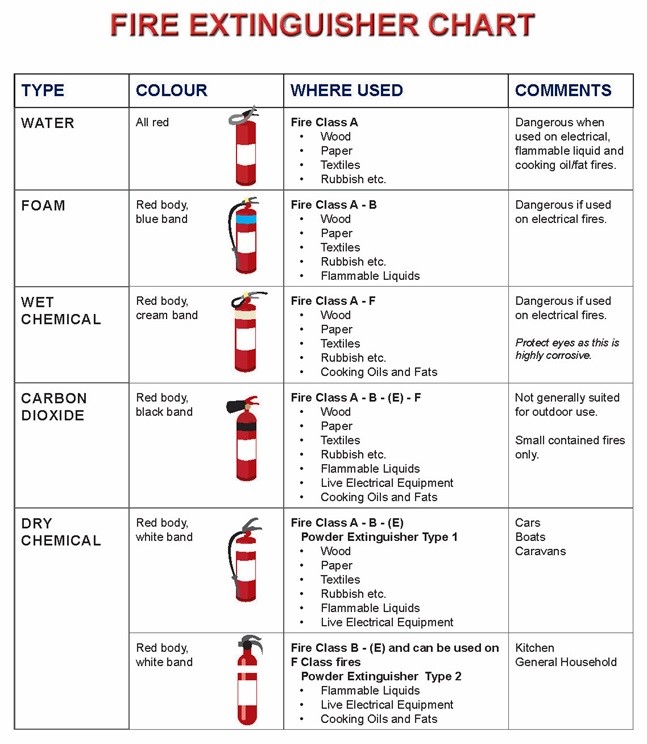
Know your Fire Extinguishers Firewatch SA
Three main types of portable fire extinguishers include: Water extinguishers: Water extinguishers are filled about two-thirds with water and then pressurized with air. When used for Class A fires, these extinguishers remove the heat from the burning materials.
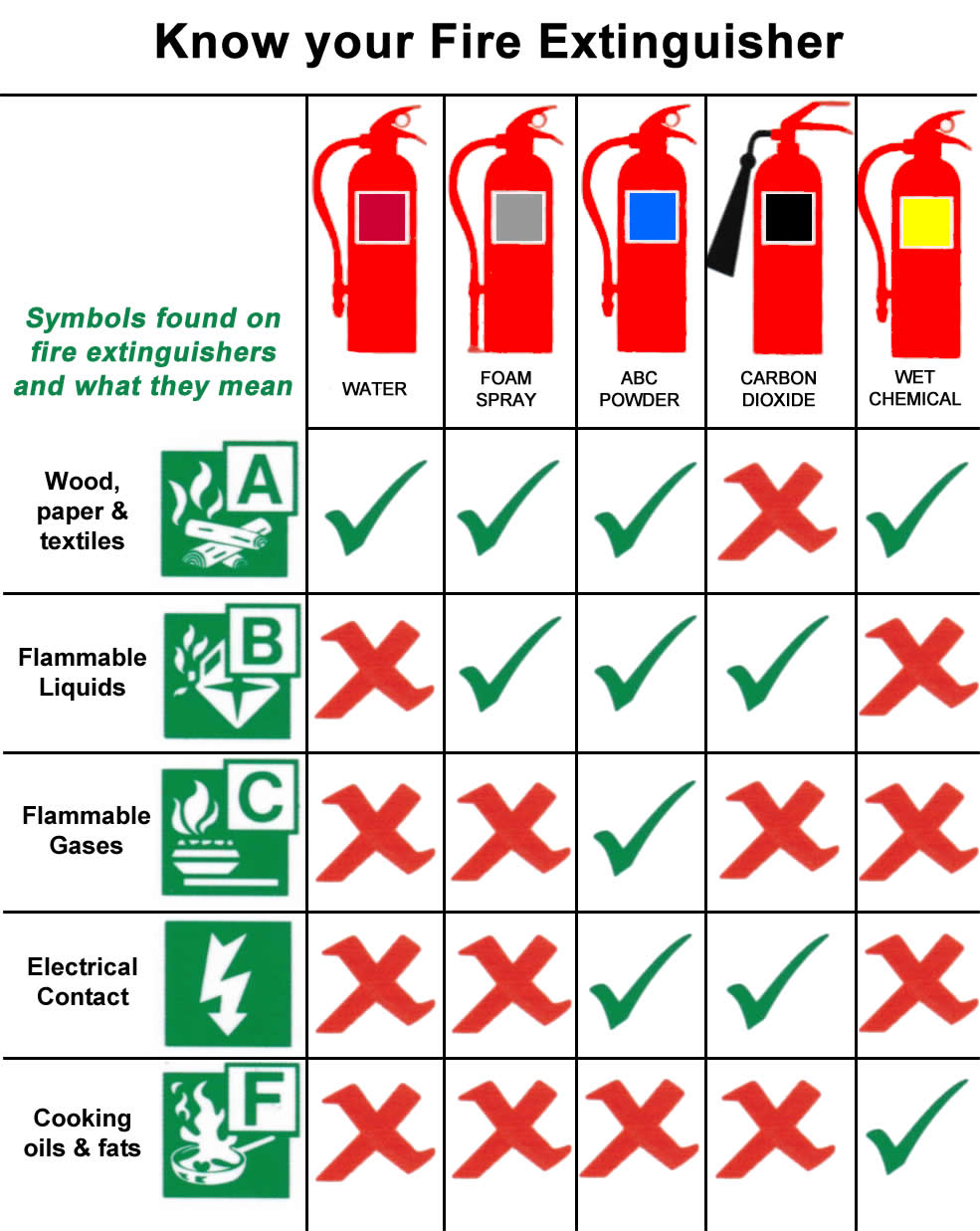
What Fire Extinguisher To Use Which Fire Extinguisher
There are four main classes of fire extinguishers: A, B, C, and D. Class A extinguishers are rated for fires that involve ordinary household items such as wood, cloth, paper, rubber and plastics. Numbers on a Class A extinguishers measure its fire-fighting capacity in water volume. For example, Class 1-A extinguishers have the equivalent of 1..
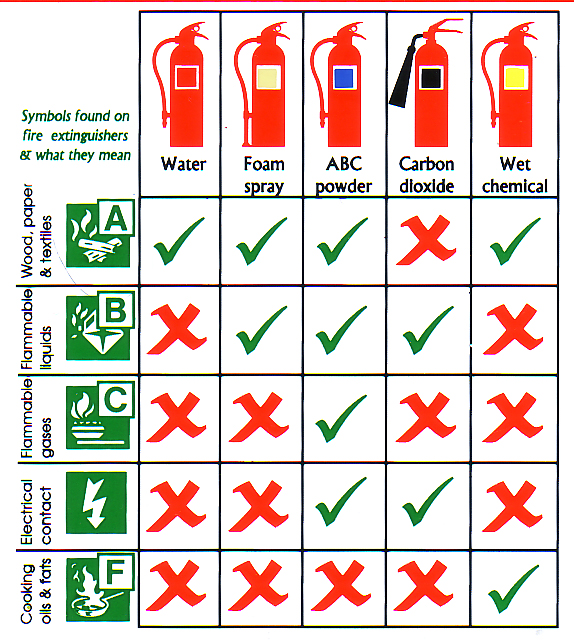
Fire Extinguishers Types & Classes Fire Safety Northants Fire
The following image in Fig. 2 provides a quick reference fire extinguisher type chart: Fig. 2: Quick Reference Fire Extinguisher Types Chart. Automatic fire extinguishers. Automatic fire extinguishers are used to fight transport fires (engine compartments of boats or large vehicles, or in industrial use, such as in generator or computer rooms.
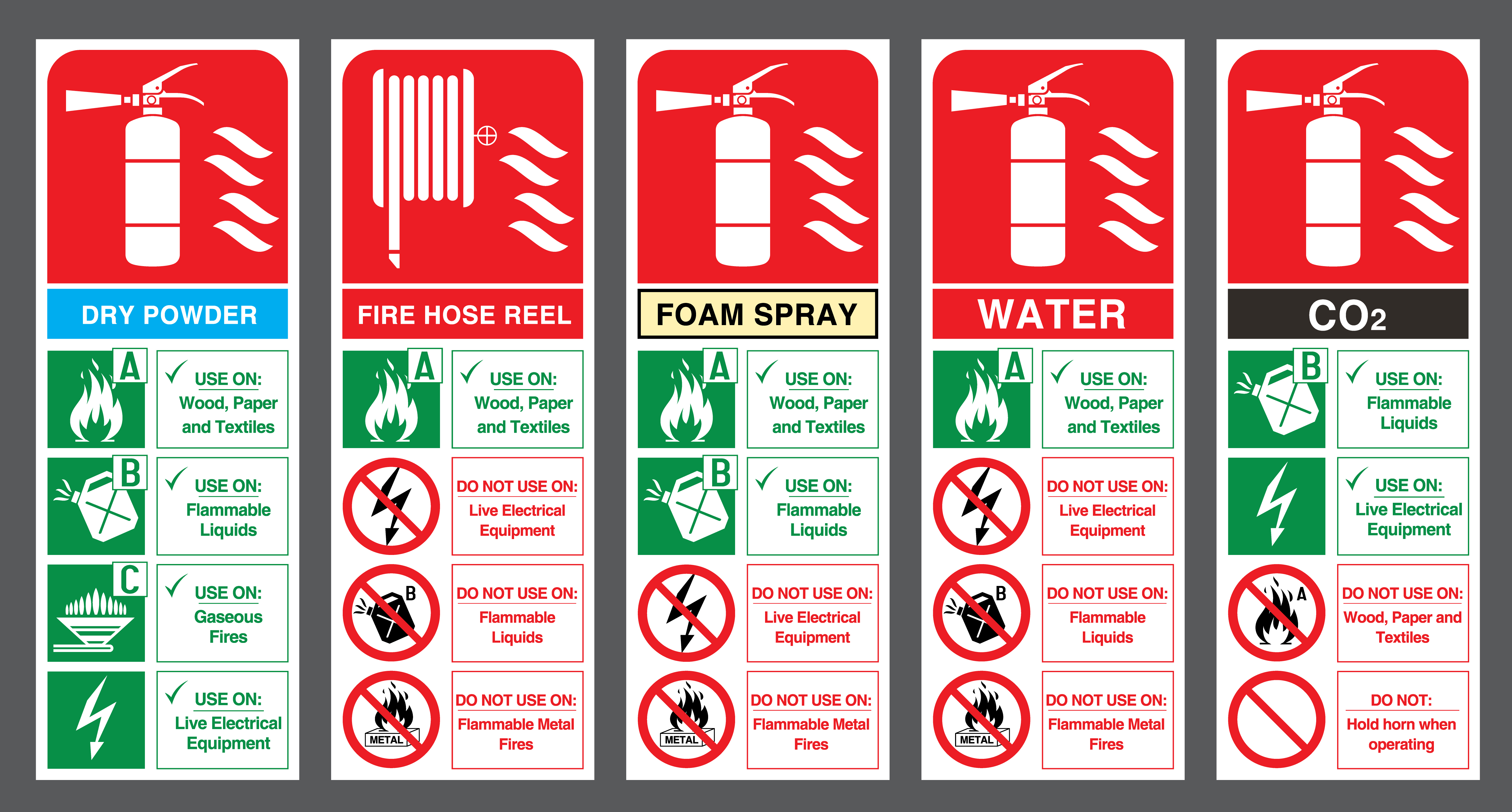
Types of Fire Extinguishers A Total Solution
The 8 types of fire extinguisher are: - - Water - Water Mist - Water Spray - Foam - Dry Powder - Standard - Dry Powder - Specialist - Carbon Dioxide ('CO2') - Wet Chemical There is no one extinguisher type which works on all classes of fire.

Fire & Extinguisher Types Misco Pinterest Fire extinguisher types
A-Type fire extinguishers, or Class A fire extinguishers, are used for fires involving the following materials: Wood Paper Cloth Rubber Plastic Numerical fire extinguisher ratings on Class A products indicate their water equivalency. To determine a product's capacity, multiply the number that precedes the letter A by 1.25.
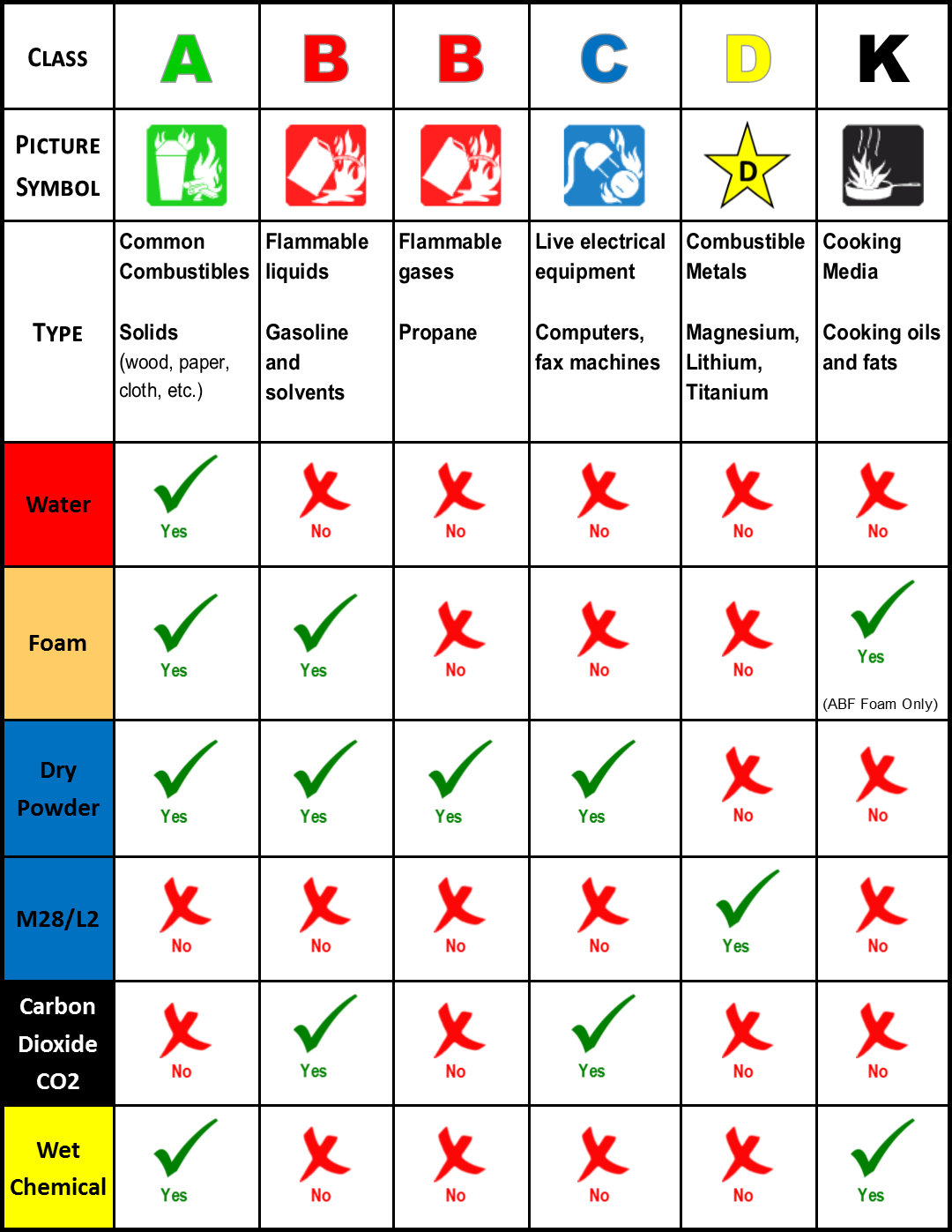
Do You Know What Type of Fire Extinguisher Your Business Needs? Global Fire Services
A foam fire extinguisher is made with a combination of foam concentrate, water and air. The thick foam smothers the oxygen from the flames and cools the fire down. Identification: Cream-colored label that says "FOAM." Used for: Class A or Class B fires. Drawbacks: Can be very messy to clean up and often leaves a residue.
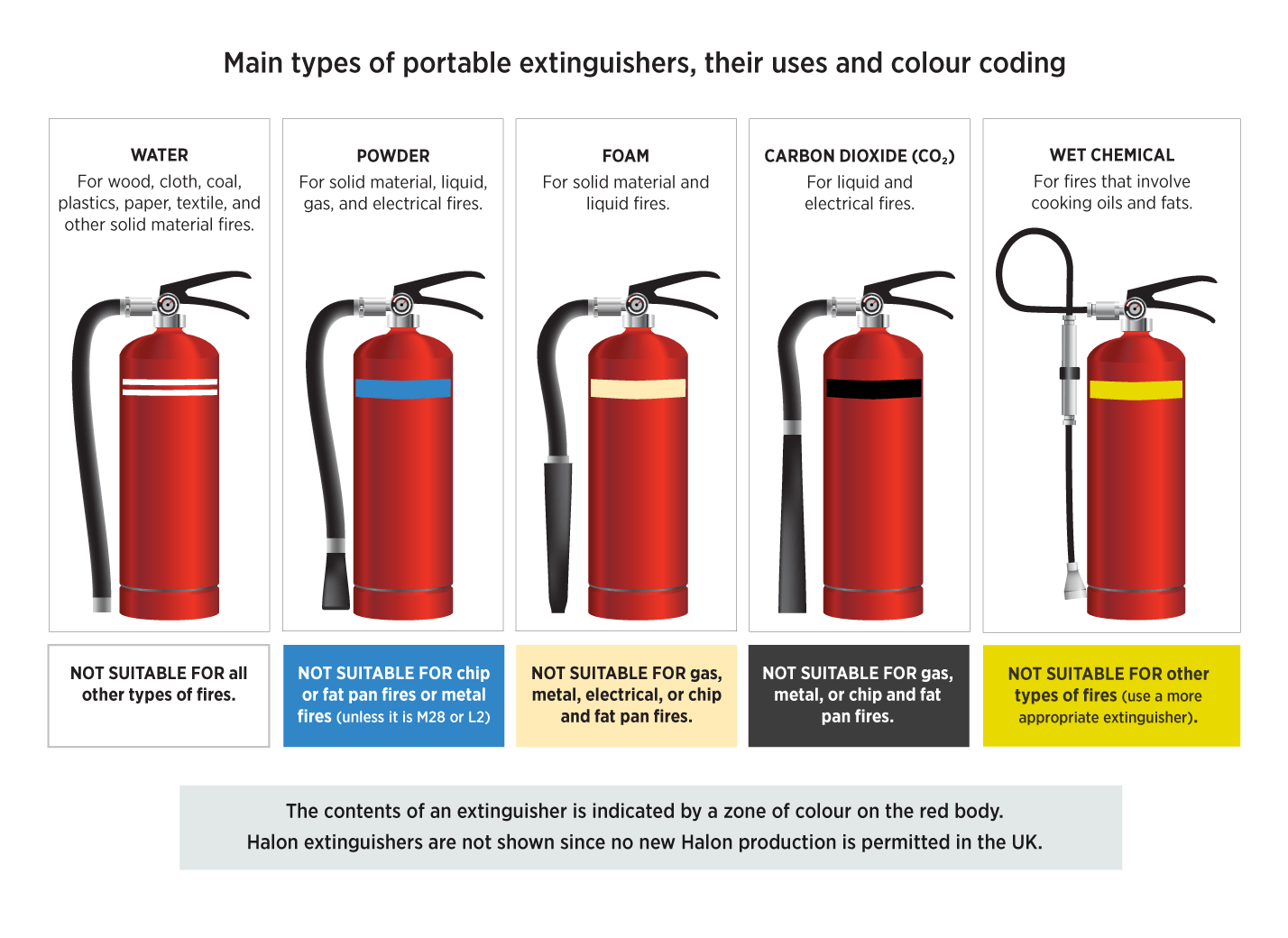
Types of Fire Extinguishers Colours, Signage & Fire Classes
According to OSHA, air pressurized water, carbon dioxide (CO2) and dry chemical are the three most common types of fire extinguishers, with wet chemical extinguishers also used often. For general use, Mike Duffield, EMC Risk Improvement Manager, sees multi-purpose fire extinguishers used most often.